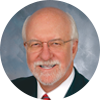Recently, I had the opportunity to serve as a panelist at the annual chiropractic Research Agenda Conference in Las Vegas. My panel also included a sociologist, a biomechanist, and a college research professor.
The college professor was very positive about the advancements we had made in research, and the design and quality of studies. However, she felt that the field still was not interested in participating in the science of chiropractic. When my turn to speak came, I tried to summarize the necessary steps for the profession to move forward.
Each year, I travel to the International Society for the Study for the Lumbar Spine. One of the most renowned people in attendance is spine surgeon Gunnar Anderson from Sweden. After he hears all the different intricate and technical papers, he usually asks a simple two-word question: "So what?" Dr. Anderson asks the most basic question in clinical science: Now that you have done all of this technical research, how can this help us help more patients in our daily practice? "So what?"
How do we implement all of the advances in chiropractic clinical and basic science that are being made in the academic community? You see, if we don't somehow take all of this information, spoon-feed it to the college students, and get it into the field, then we have failed to move the profession forward.
At the RAC, there was also a lot of chatter about evidence-based practice (EBP). But for the most part, the field doesn't have a clue about what EBP is, or more importantly, what it will do for their practices on Monday morning. There is a group of chiropractors working their hearts out to produce a document that will support, help and guide practitioners in their daily practices. I feel that we must show the field that this is not an attempt to limit practitioners in their daily work, but a document that can help the field doctor be a better doctor and get paid for his or her contributions to health care.
Dr. Scott Haldeman made a statement in casual conversation that I think said it all. He made the observation that in the medical world, over 50 percent of every specialty goes to their annual research conference. He noted that they may disagree completely, but they go anyway, and in the end, they come away with a broader perspective. I counted very few chiropractic clinicians at the conference, but the ones I talked to who did attend were absolutely thrilled by the programs.
So, what we need is a cultural shift if we are to survive and prosper as a profession. The academic community has much practical and powerful information for the field, and so now we should perhaps develop a special information track designed especially for the field doctor. In any case, it is time for our field chiropractic physicians to attend chiropractic research conferences, such as the RAC. Doctors of chiropractic are a rich resource of clinical wisdom that would benefit chiropractic researchers, and the academic-practitioner dialogue could only help the profession make its much-needed cultural shift.
Arlan Fuhr, DC
Phoenix, Arizona
Click here for previous articles by Arlan Fuhr, DC.





